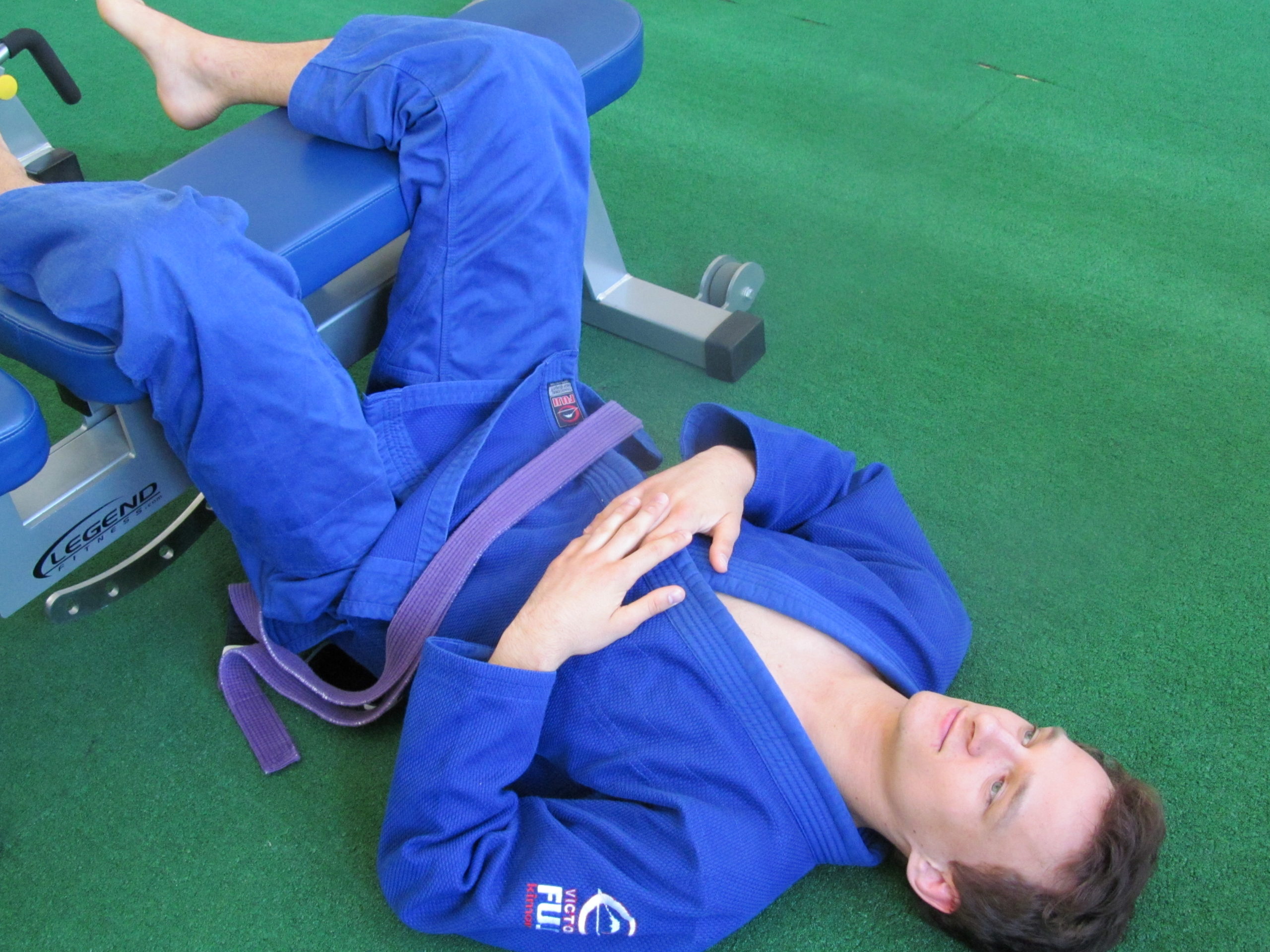Strength and Conditioning for Brazilian Jiujitsu – Functional or Just Fancy?
Over and over again the internet broadcasts images of routines and contortions which capture the imaginations
of athletes wanting to improve performance in their sport. Some of these grandiose maneuvres require great strength and skill. However, while they appeal to the imagination, the vast majority will not contribute to improved sport performance. Fancy does not translate automatically to function! In fact, internet routines often result in impaired performance, an over-worked body, greater incidence of injury, emptier wallets and increased cynicism. What impedes great looking routines from being functional? The answer is both simple and complex: SPECIFICITY.
Just because an exercise requires great balance, flexibility, agility and strength does not mean it is useful to the function of your sport. All the above are all HIGHLY specific physical traits. Universal balance, universal flexibility, universal agility and universal strength do not exist. For example, the term “balance” actually refers to several independent abilities. We can keep ourselves upright by reflexively righting our posture (wobble board/ball), changing base (countering sweeps/throws with a well placed hand or foot) and compensating for off-center loads (leaning sideways to carry a heavy suitcase). In addition, dynamic balance (think cutting or briefly planting on one foot) is entirely different from static balance (standing on a wobble board or on a single foot for more than a few seconds). In situations of dynamic balance, a single foot may be exposed to forces up to six times that of your bodyweight. Static balance training, on the other hand, rarely exceeds bodyweight. Thanks to specificity, you can be certain the ability to balance on a ball or the ability to do a single-arm handstand will not improve your function as a jiu-jitsu fighter (not even a little!).
Like balance, flexibility, agility and strength develop very specifically to the demands of a physical activity. Demands vary broadly in regards to force, velocity, range of motion, duration of effort and muscles activated. The body adapts with great precision. Most fancy internet exercise routines feature physical demands incongruent with essential jiu-jitsu movements. Identifying truly functional exercises and programs requires experience, knowledge and common sense. In the face of first impressions, ask yourself the following questions:
- Are the featured exercises really relevent to important jiu-jitsu movements?
- Do the exercises engage the same muscles as the BJJ movements I want to improve?
- Are range of motion, force, velocity and duration of effort identical?
- Is progress tangeable? Load, distance and time should be readily measurable. All programs should feature some form of objective testing.
- Can I learn the exercise quickly with relative ease?
- What impact will the exercise have on my recovery?
Case Study:
Melissa was a die-hard purple belt who wanted to improve all facets of her game. Many of her perceived weakness were technical issues and she rightly believed that only further jiu-jitsu training and instruction would improve them. However, in many circumstances, Melissa felt more strength and endurance would be an asset. At the top of her list was her ability to keep her ankles locked in closed guard. She often found herself in closed guard situations where her adversaries opened her legs with little delay and minimal pressure. Melissa rightly assumed that cart-wheels, kip-ups and hand-stands on a ball were not going to help this aspect of her game. Instead, she identified the relevent ankle muscles and the conditions under which they operated. This resulted in the following exercise:

Pressing the lateral edge of the foot against finger pressure.
Though incredibly simple and unsophisticated, this exercise improved her closed-guard retention times by 300 percent! (according to a crude yet astute test) Furthermore, this exercise resulted in no additional strain to her body and little time committment. Amazed by her success, Melissa applied the same methodology to the rest of her strength and conditioning priorities.
Impressive feats of balance, flexibility, agility and strength are only functional if they match your goal. Subtle differences in physical demands can completely inhibit an exercise’s relevance to your Brazilian Jiu-jitsu performance. Fancy, ineffective strength and conditioning exercises and routines can cause injury, performance decline, wasted time and money. Even worse, disingenuous exercises and routines can cause martial artists to lose faith in strength and conditioning. Hopefully, with enough dissemination of well intended knowledge, simplicity will sell.
